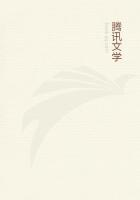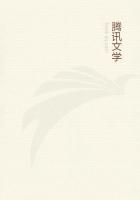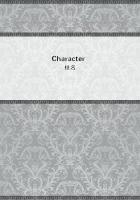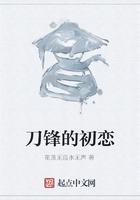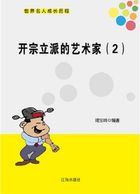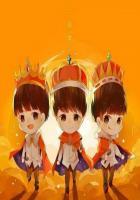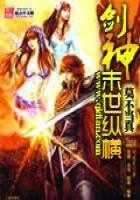Soon after his discovery of the microphone he was invited to become a Fellow of the Royal Society, and a few years later, in 1885 he received the Royal Medal of the Society for his experiments, and especially those of the microphone. In 1881 he represented the United Kingdom as a Commissioner at the Paris International Exhibition of Electricity, and was elected President of one of the sections of the International Congress of Electricians. In 1886 he filled the office of President of the Society of Telegraph Engineers and of Electricians.
The Hughes type-printer was a great mechanical invention, one of the greatest in telegraphic science, for every organ of it was new, and had to be fashioned out of chaos; an invention which stamped its author's name indelibly into the history of telegraphy, and procured for him a special fame; while the microphone is a discovery which places it on the roll of investigators, and at the same time brings it to the knowledge of the people. Two such achievements might well satisfy any scientific ambition. Professor Hughes has enjoyed a most successful career. Probably no inventor ever before received so many honours, or bore them with greater modesty.
------------------------------------------------------------------------APPENDIX.
---------
I. CHARLES FERDINAND GAUSS.
CHARLES FERDINAND GAUSS was born at Braunschweig on April 30, 1777. His father, George Dietrich, was a mason, who employed himself otherwise in the hard winter months, and finally became cashier to a TODTENCASSE, or burial fund. His mother Dorothy was the daughter of Christian Benze of the village of Velpke, near Braunschweig, and a woman of talent, industry, and wit, which her son appears to have inherited. The father died in 1808 after his son had become distinguished. The mother lived to the age of ninety-seven, but became totally blind. She preserved her low Saxon dialect, her blue linen dress and simple country manners, to the last, while living beside her son at the Observatory of Gottingen.
Frederic, her younger brother, was a damask weaver, but a man with a natural turn for mathematics and mechanics.
When Gauss was a boy, his parents lived in a small house in the Wendengrahen, on a canal which joined the Ocker, a stream flowing through Braunschweig. The canal is now covered, and is the site of the Wilhelmstrasse, but a tablet marks the house. When a child, Gauss used to play on the bank of the canal, and falling in one day he was nearly drowned. He learned to read by asking the letters from his friends, and also by studying an old calendar which hung on a wall of his father's house, and when four years old he knew all the numbers on it, in spite of a shortness of sight which afflicted him to the end. On Saturday nights his father paid his workmen their wages, and once the boy, who had been listening to his calculations, jumped up and told him that he was wrong. Revision showed that his son was right.
At the age of seven, Gauss went to the Catherine Parish School at Braunschweig, and remained at it for several years. The master's name was Buttner, and from a raised seat in the middle of the room, he kept order by means of a whip suspended at his side. A bigger boy, Bartels by name, used to cut quill pens, and assist the smaller boys in their lessons. He became a friend of Gauss, and would procure mathematical books, which they read together. Bartels subsequently rose to be a professor in the University of Dorpat, where he died. At the parish school the boys of fourteen to fifteen years were being examined in arithmetic one day, when Gauss stepped forward and, to the astonishment of Buttner, requested to be examined at the same time. Buttner, thinking to punish him for his audacity, put a 'poser' to him, and awaited the result. Gauss solved the problem on his slate, and laid it face downward on the table, crying 'Here it is,' according to the custom. At the end of an hour, during which the master paced up and down with an air of dignity, the slates were turned over, and the answer of Gauss was found to be correct while many of the rest were erroneous.
Buttner praised him, and ordered a special book on arithmetic for him all the way from Hamburg.
>From the parish school Gauss went to the Catherine Gymnasium, although his father doubted whether he could afford the money. Bartels had gone there before him, and they read the higher mathematics. Gauss also devoted much of his time to acquiring the ancient and modern languages.
>From there he passed to the Carolinean College in the spring of 1792.
Shortly before this the Duke Charles William Ferdinand of Braunschweig among others had noticed his talents, and promised to further his career.
In 1793 he published his first papers; and in the autumn of 1795 he entered the University of Gottingen. At this time he was hesitating between the pursuit of philology or mathematics; but his studies became more and more of the latter order. He discovered the division of the circle, a problem published in his DISQUISITIONES ARITHMETICAE, and henceforth elected for mathematics. The method of least squares, was also discovered during his first term. On arriving home the duke received him in the friendliest manner, and he was promoted to Helmstedt, where with the assistance of his patron he published his DISQUISITIONES.
On January 1, 1801, Piazzi, the astronomer of Palermo, discovered a small planet, which he named CERES FERDINANDIA, and communicated the news by post to Bode of Berlin, and Oriani of Milan. The letter was seventy-two days in going, and the planet by that time was lost in the glory of the sun, By a method of his own, published in his THEORIA MOTUSCORPORUM COELESTIUM, Gauss calculated the orbit of this planet, and showed that it moved between Mars and Jupiter. The planet, after eluding the search of several astronomers, was ultimately found again by Zach on December 7, 1801, and on January 1, 1802. The ellipse of Gauss was found to coincide with its orbit.

